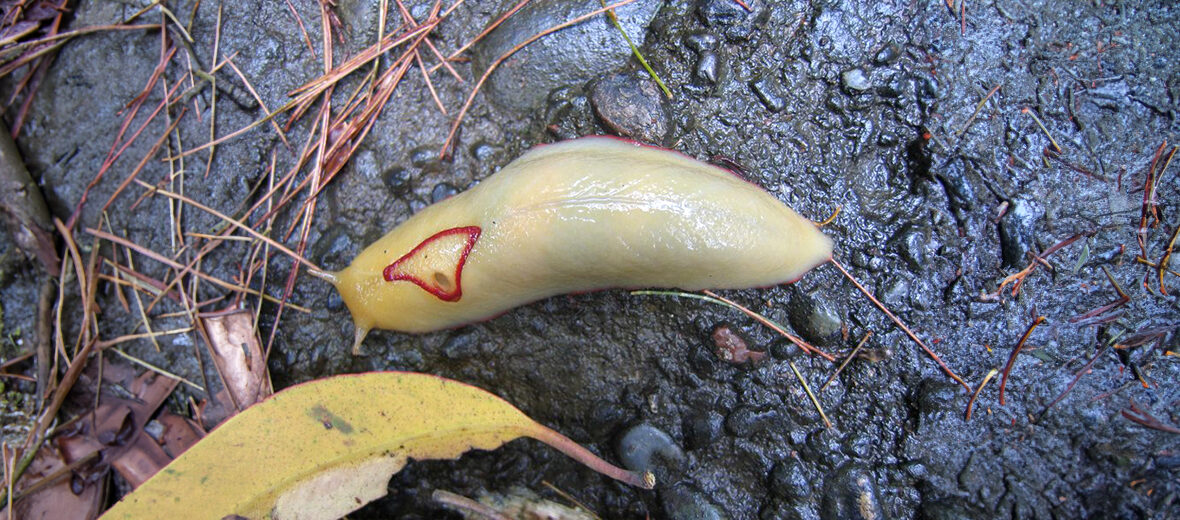
The red triangle slug is a large land slug that breathes air. These critters are the largest land slug in Australia. They are found primarily in eastern Australia. These slugs are a terrestrial pulmonate gastropod mollusk that belong to the family Athoracophoridae (the leaf-veined slugs). Due to their abundance, they are not currently listed with the IUCN.
First the Stats…
Scientific name: Triboniophorus graeffei
Weight: Up to 1+ ounce
Length: Up to 5.9 inches
Lifespan: Up to 3 years
Now on to the Facts!
1.) These slugs can be very colorful and are a common sight in Australia.
2.) Like many other slugs, they prefer damp forests, gardens, heaths, and woodland habitats.
3.) They graze on algae that grows on rocks and eucalyptus trees.
4.) When they enter houses, they have been seen grazing on the mold that grows in showers and bathtubs.
5.) Contrary to other slug species, these critters have just 2 tentacles.
But wait, there’s more on the red triangle slug!
6.) The variation in colors has scientists looking to see if these represent other species or merely color variants.
7.) Red triangle slugs are hermaphrodites (they have both male and female reproductive parts).
Did you know…?
When threatened, they secrete a type of sticky mucus that is so strong it can glue predators down for days.
8.) When a male is found, they will encircle each other and exchange sperm. The up to 30 eggs are then deposited in leaf litter for protection.
9.) The sticky mucus that they produce is stickiest in wet environments and becomes less so when the air is dry.
10.) This mucus is secreted from specialized cells located in their dorsal surface, aka back.
11.) Red triangle slugs are nocturnal (active at night).
Now a Short Red Triangle Slug Video!
Be sure to share & comment below! Also, check out the Critter Science YouTube channel. Videos added regularly!
Want to suggest a critter for me to write about? Let me know here.
Some source material acquired from: Wikipedia & IUCN
Photo credit: Australian Museum



